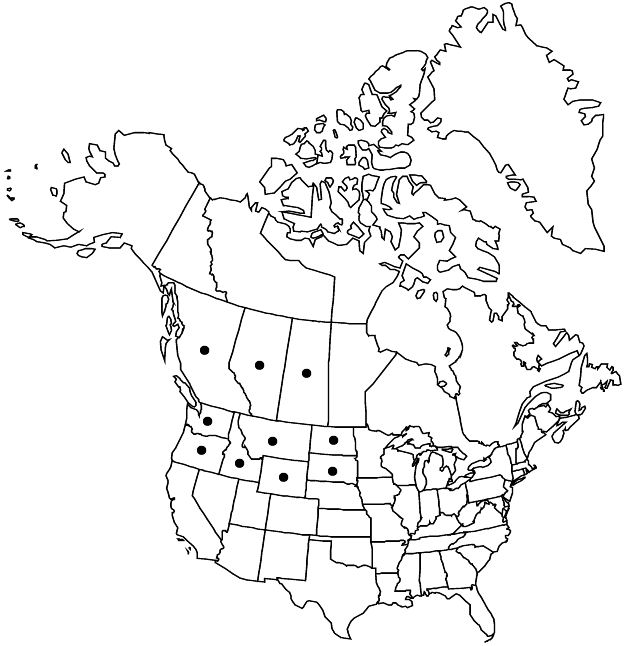Spiraea lucida
Pittonia 2: 221. 1892.
Shrubs, 3–10 dm. Stems erect to ascending, often dying to ground annually, rarely branched. Leaves: petiole 4–15 mm; blade obovate to ovate, 2–8 × 1–3(–5) cm, membranous, base acute, margins usually coarsely serrate in distal 1/4–1/2 with secondary and tertiary teeth, teeth rounded or nearly entire with 1–2 teeth near apex, number of primary and secondary serrations 0–1 times number of secondary veins (excluding inter-secondary veins), venation pinnate cladodromous, secondary veins not prominent, apex acute to obtuse, surfaces glabrous. Inflorescences mostly terminal, corymbiform, 5–8 × 3–10 cm height 0.5–1 times diam.; branches rarely in axils of leaves, glabrous or sparsely pubescent. Pedicels 0.5–4 mm, glabrous or sparsely pubescent. Flowers 4–6 mm diam.; hypanthia hemispheric, 0.5–1 mm, abaxial surface glabrous, adaxial glabrous or glabrate; sepals triangular, 0.5–1.1 mm; petals white, orbiculate, 1–2 mm; staminodes 10–12; stamens 18–24, 2 times petal length. Follicles oblanceoloid to ellipsoid, 2–2.5 mm, glabrous or sparsely pubescent.
Phenology: Flowering May–Aug; fruiting Jun–Nov.
Habitat: Open woods, meadows, stream banks, often on rocky scree slopes
Elevation: 10–3300 m
Distribution

Alta., B.C., Sask., Idaho, Mont., N.Dak., Oreg., S.Dak., Wash., Wyo.
Discussion
Spiraea lucida has been considered a variety of S. betulifolia based upon: hypanthial vestiture, inflorescence shape, extent of leaf serration, and leaf texture (L. J. Uttal 1974); or, corymbiform inflorescences, white petals, plant nearly glabrous throughout (C. L. Hitchcock et al. 1955–1969, vol. 3; H. J. Scoggan 1978–1979, part 3; A. Cronquist et al. 1997). Although these character states occur in the eastern Asian S. betulifolia, it has very different leaf architecture showing much greater organization of the tertiary venation, which appears to be unique and is not found in any North American taxa. Spiraea lucida has an extremely variable leaf morphology that seems related to the tendency for stems to die back annually and the consequent annual production of long shoots. C. Sterling (1966) did not examine all taxa of Spiraea; the character states of carpel morphology of S. stevenii (see discussion there under) and S. lucida were reported to be similar and to differ slightly from those of S. betulifolia (the provenance of his specimen is not clear from the text).
Selected References
None.